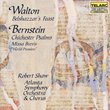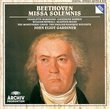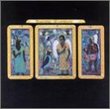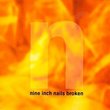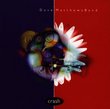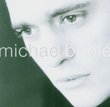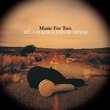| All Artists: Franz Liszt, Ivan Fischer, Budapest Festival Orchestra Title: Liszt: Hungarian Rhapsodies Members Wishing: 0 Total Copies: 1 Label: Philips Release Date: 10/20/1998 Genre: Classical Styles: Historical Periods, Romantic (c.1820-1910), Symphonies Number of Discs: 1 SwapaCD Credits: 1 UPC: 028945657028 |
Search - Franz Liszt, Ivan Fischer, Budapest Festival Orchestra :: Liszt: Hungarian Rhapsodies
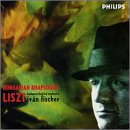 | Franz Liszt, Ivan Fischer, Budapest Festival Orchestra Liszt: Hungarian Rhapsodies Genre: Classical
![header=[] body=[This CD is available to be requested as disc only.]](/images/attributes/disc.png?v=15401716) ![header=[] body=[This CD is available to be requested with the disc and back insert.]](/images/attributes/disc_back.png?v=15401716) ![header=[] body=[This CD is available to be requested with the disc and front insert.]](/images/attributes/disc_front.png?v=15401716) ![header=[] body=[This CD is available to be requested with the disc, front and back inserts.]](/images/attributes/disc_front_back.png?v=15401716) |
Larger Image |
CD DetailsSimilarly Requested CDs
|
CD ReviewsFresh, Exciting Performances of Liszt's Hungarian Rhapsodies John Kwok | New York, NY USA | 03/06/2002 (5 out of 5 stars) "Ivan Fischer and his Budapest Festival Orchestra yield yet another artistic triumph in these vividly fresh, exciting performances of Liszt's Hungarian Rhapsodies; those which were orchestrated from the original versions for the piano. Fischer not only does a great job leading his orchestra, but also is a fascinating musical archaeologist comparable to the likes of Harnoncourt. He adds a couple of classic Gypsy musicians to play along with the orchestra in several rhapsodies. Admittedly this is an expensive CD to acquire, but it contains the most exhilirating interpretations of Liszt's orchestrated versions of his Hungarian Rhapsodies I've heard on CD. Of course the sound quality is superb." Thrilling! M. C. Passarella | Lawrenceville, GA | 05/04/2006 (5 out of 5 stars) "This is very probably the most exciting performance that's ever been accorded Liszt's Rhapsodies. There is an improvisational feeling throughout and some obvious ad libitum passages that add to this feeling. The first time you hear the wild ascending scale in the clarinet at the end of Rhapsody No. 1, you wonder, "What's going on here?" But the answer is obvious: Gypsy spirit. It helps that Ivan Fischer has a first-rate, highly responsive body of players at his disposal, but he is clearly the guiding light in the proceedings and should be given all credit for jazzing up what often become work-a-day warhorses in performance. The recording is equally lively, but I wish the engineers had backed off just a bit. The in-your-face perspective gets tiring after a bit, and more air around the musicians would have relieved the claustrophobia. On the other hand, some will think the performances and recording go hand in glove. And I could see their point. At any rate, the performances are so enlivening that any quibbles about the sonics are almost beside the point. Incidentally, for a more traditional but no less compelling reading (with much warmer sound), try Masur and Leipzig, also from Philips. These two recordings make perfect foils for one another." Exotic Gypsy Music Brett A. Kniess | Madison, WI | 02/07/2006 (5 out of 5 stars) "Franz Liszt was a well-known virtuoso pianist who was proud of his Hungarian lineage; the use of his Hungarian name, Ferenc, is evidence of this. He composed 19 Hungarian Rhapsodies for solo piano, evoking the music of Hungarian gypsies, and performance-wise, are quite virtuosic. Later he arranged six of the rhapsodies for orchestra (Brahms orchestrated his four-hand piano Hungarian Dances, and to some degree we can include Dvorak's Slavonic Dances in the comparison), but unlike Brahms, the rhapsodies tend to be more emotionally wrought and outlandish, rather than classically influenced.
Various simple techniques of composition are used to create a "gypsy" sound. The most evident is the constant, and often, sudden shifts of mode, usually major and minor. The influence of dance is apparent in all of these works, and the cadenza ad libitums give an improvised folk feel, as well as the occasional acceleration to the ends of the rhapsodies, a breathless folk influence. The first orchestral rhapsody (Piano Rhapsody 14) begins with a funeral march in a gloomy minor key; an exultant, heroic theme in major takes over, but the work ends in a playful dance with various stops and starts, but once it gets going, the minor vs. major mode shifts are really visualized. The Second Rhapsody corresponds to the same piano numbered rhapsody, now made famous through cartoons. A slow minor dance, which seems exotic, of not a little dirty, opens the rhapsody, but a vivace segue leads to the riotous scherzo; many modulations are only a part of the outrageous, extroverted chaos of the reeling finale. A pompous march in major starts the Third Rhapsody (No. 6 for piano) with a brief feature for the orchestra sections on a fanfare theme. A forlorn clarinet recitative and violin solo put some wringing emotion into the rhapsody, but a cheery, bouncy, light dance leads to a presto ending full of vim and vigor. Bitter proclamations from unison brass open Rhapsody No. 4 (Piano version 12) leading to a stately brass chorale and a unique string chorale. A dainty woodwind dance enters, and the two ideas fight for prominence throughout the work. The Fifth Rhapsody (also No. 5 for piano) exhibits a dolorous mood featuring low strings in great yearning, contrasted by a slow, major-mode pastoral melody, but all ends in sorrow and melancholy. The final rhapsody, subtitled "Carnival in Pest" (No. 9 for piano) begins with a slow, but hopeful tone in preparations for the carnival. A rustic, lumbering dance follows with solo trumpet, but eventually the dance becomes more and more industrious until it becomes a full rousing dance. The finale is a fantasy of sorts, combining many textures and tempos, with radical modulations; the grand conclusion is heralded by huge brass statements and a triumphant close. Ivan Fischer has attempted to create a more "authentic" gypsy sound in these works instead of a traditional concert stage approach. Often incorporating ad libitum cadenzas for virtuoso violin, clarinet, and flute, he encourages his authentic gypsy soloists to improvise. The addition of cimbalom players (a sort of dulcimer/autoharp instrument occasionally heard in Kodaly) give the works a unique flavor. Fischer also asks for an ensemble timbre that is a bit rawer, especially in the strings and winds, as well as adding appropriate slides/glissandi to notes, giving a folk sound that is a bit rough around the edges. Fischer also stretches beats occasionally, adding and subtracting time for an anticipatory feeling, and takes liberties combining facets from the piano version and orchestrated version. The effect is excellent. The Budapest Festival Orchestra is passionate playing the music, never out of control, but a frenzied spontaneity exists. Dynamics, articulation, and style is looked at carefully for dramatic flair; the solo cadenzas are impressive, and the experience is awesome. The Philips sound is also a good full and vibrant sound. There are no other modern recordings of all the orchestrated rhapsodies (save Mehta and the Israel SO on Sony) to speak of really, so, for pure, unadulterated fun, this 60-minute CD is a good purchase to some bristling, energetic music." |

 Track Listings (6) - Disc #1
Track Listings (6) - Disc #1